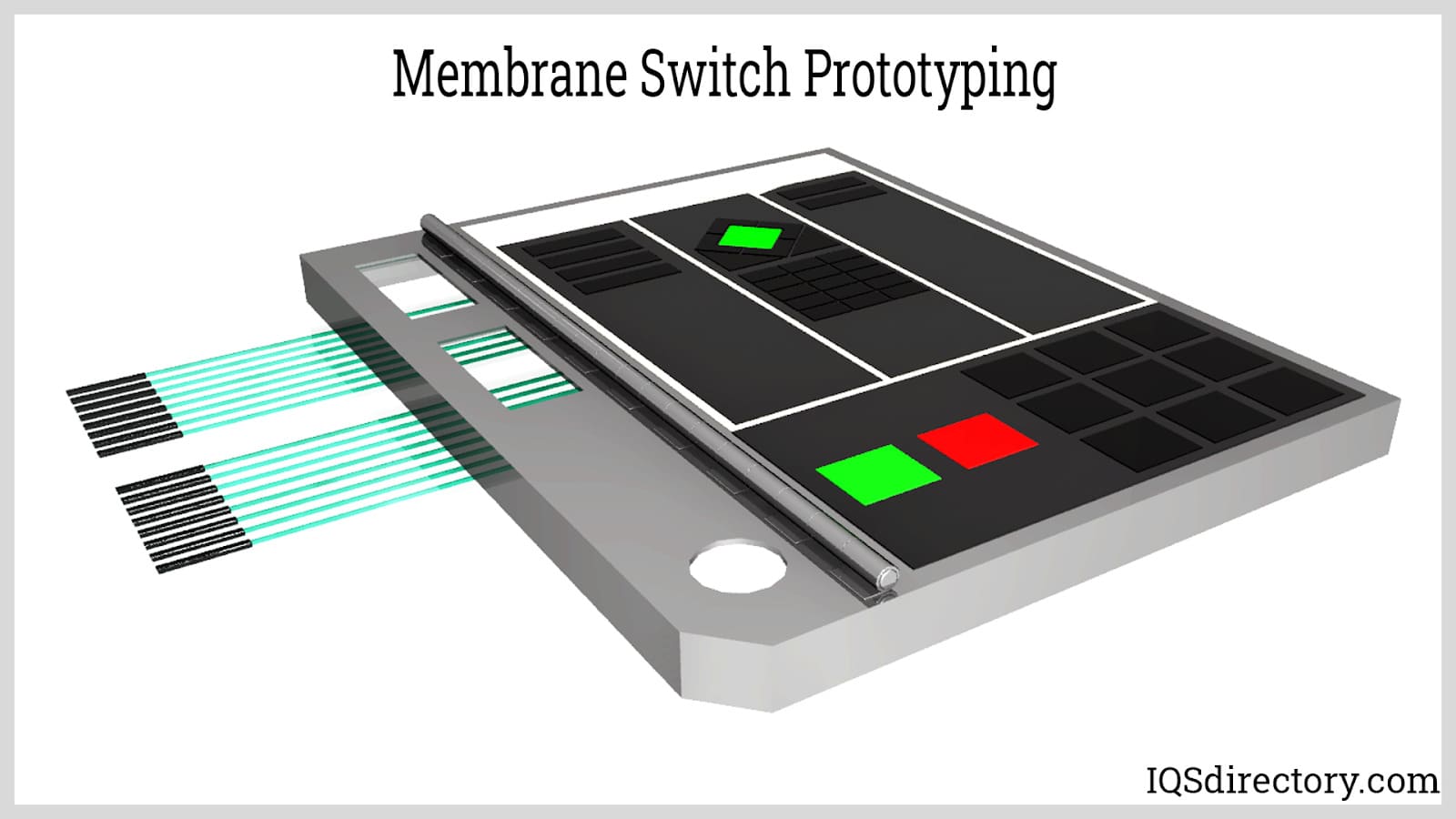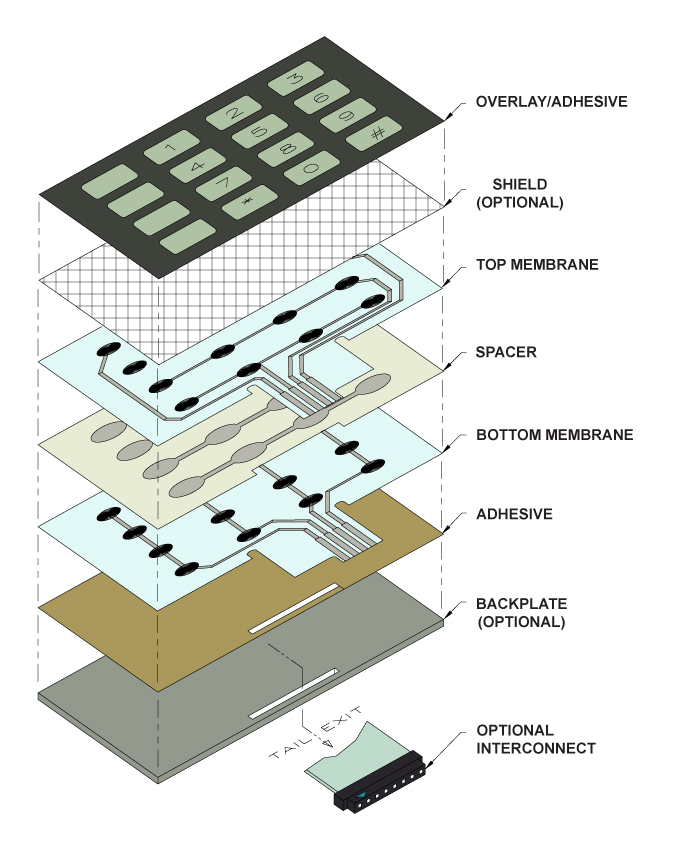Why Membrane Layer Changes Are Important for Resilient Control Systems
Membrane switches play an essential duty in ensuring the durability and reliability of control systems across numerous markets. As we check out the multifaceted advantages of membrane switches, it comes to be obvious that their importance transcends mere functionality, affecting user experience and operational efficiency.
Overview of Membrane Layer Buttons
Membrane layer buttons are flexible and reputable parts typically used in numerous digital control systems. These switches include numerous layers, consisting of a graphic overlay, a spacer layer, and a printed circuit layer. The visuals overlay gives both functional and aesthetic design, while the spacer layer makes sure that the buttons are activated just when pressed. The published circuit layer contains conductive traces that complete an electric circuit when the membrane is pushed, allowing the device to reply to individual inputs.
Membrane layer switches are usually preferred in applications needing a small and light-weight design, making them ideal for handheld devices, medical tools, and industrial machinery. They can be tailored to meet particular customer needs and can incorporate numerous attributes such as backlighting, tactile feedback, and numerous shades. Membrane layer buttons are resistant to dirt, dampness, and pollutants, making them suitable for atmospheres where durability is necessary.
Benefits of Longevity
In lots of applications, the resilience of membrane switches over deals significant advantages that enhance their total performance and reliability. These switches are made to endure extreme settings, making them optimal for use in demanding conditions such as high humidity, extreme temperature levels, and exposure to chemicals. Their robust construction assists to avoid damages from physical effect, guaranteeing lasting functionality and lessening the requirement for regular substitutes.
Furthermore, membrane buttons are immune to wear and tear, which is important in applications where regular interaction happens. This sturdiness equates to lower upkeep expenses, as organizations take advantage of lowered downtime and less service disruptions. Additionally, the encapsulated design of membrane switches over safeguards interior components from dust and dampness access, further contributing to their life-span.
One more advantage is their capacity to keep consistent performance over time. With a high resistance for mechanical stress, these switches protect their tactile responses and electric stability, ensuring individual contentment. Eventually, the sturdiness of membrane layer switches not just improves operational effectiveness however also fosters confidence in their reliability, making them a preferred choice for control systems throughout numerous fields.
Applications in Numerous Industries
Long lasting control systems utilizing membrane switches locate considerable applications throughout a variety of markets, each taking advantage of the unique attributes these buttons supply. In the clinical industry, membrane buttons are essential for devices such as patient displays and diagnostic devices, where dependability and ease of cleansing are extremely important. Their resistance to wetness and contaminants guarantees they preserve functionality in sterilized atmospheres.
The vehicle industry leverages membrane switches for control panel controls and infomercial systems, where they supply sleek, inconspicuous interfaces that enhance customer experience. These switches are additionally created to endure rough conditions, consisting of exposure to severe temperature levels additional info and vibrations.
In commercial setups, membrane buttons are typically made use of in machinery control board, providing responsive feedback and durability needed for high-usage applications. Their ability to withstand chemicals makes them suitable for manufacturing atmospheres where spills and contaminants are regular.

Consumer electronics, such as cooking area appliances and push-button controls, additionally make use of membrane switches for their convenience and cost-effectiveness. Overall, the flexibility and robust nature of membrane changes make them crucial across different markets, ensuring efficient operation and durability in control systems.
Style and Aesthetic Appeal
While performance is extremely important, the design and aesthetic appeal of control systems geared up with membrane layer buttons play a crucial role in user interaction and general experience (membrane switch). The visual design of these other switches can considerably influence individual understanding and communication. A properly designed membrane layer button improves the appearance of the gadget, making it a lot more enticing to customers and cultivating a link in between the customer and the item
Membrane layer changes provide a large amount of versatility in style, allowing producers to customize graphics, colors, and structures to line up with brand identity and item aesthetics. Using vivid shades and unique patterns can draw attention, while responsive comments can strengthen the individual's interaction with the device. Additionally, the capability to integrate LED indications and backlighting right into the membrane button layout supplies both functional and visual advantages, improving exposure and usability in different settings.

Enhancing Customer Experience

In addition, membrane layer switches can be customized to incorporate graphical interfaces, improving functionality by offering details in a clear and instinctive manner (membrane switch). This customization can include icons, tags, and shade coding that overview customers via facility capabilities easily. Additionally, their flexibility enables for combination in different atmospheres, guaranteeing constant performance whether in industrial machinery or consumer electronics
The resilience of membrane switches additionally plays a critical role in customer experience. By holding up against rough problems and prolonged use, these switches reduce the likelihood of system failings, therefore promoting reliability and individual confidence. Ultimately, the strategic use membrane layer changes not only boosts capability however also significantly improves individual communication with control systems, making them an indispensable part in contemporary layout.
Final Thought
